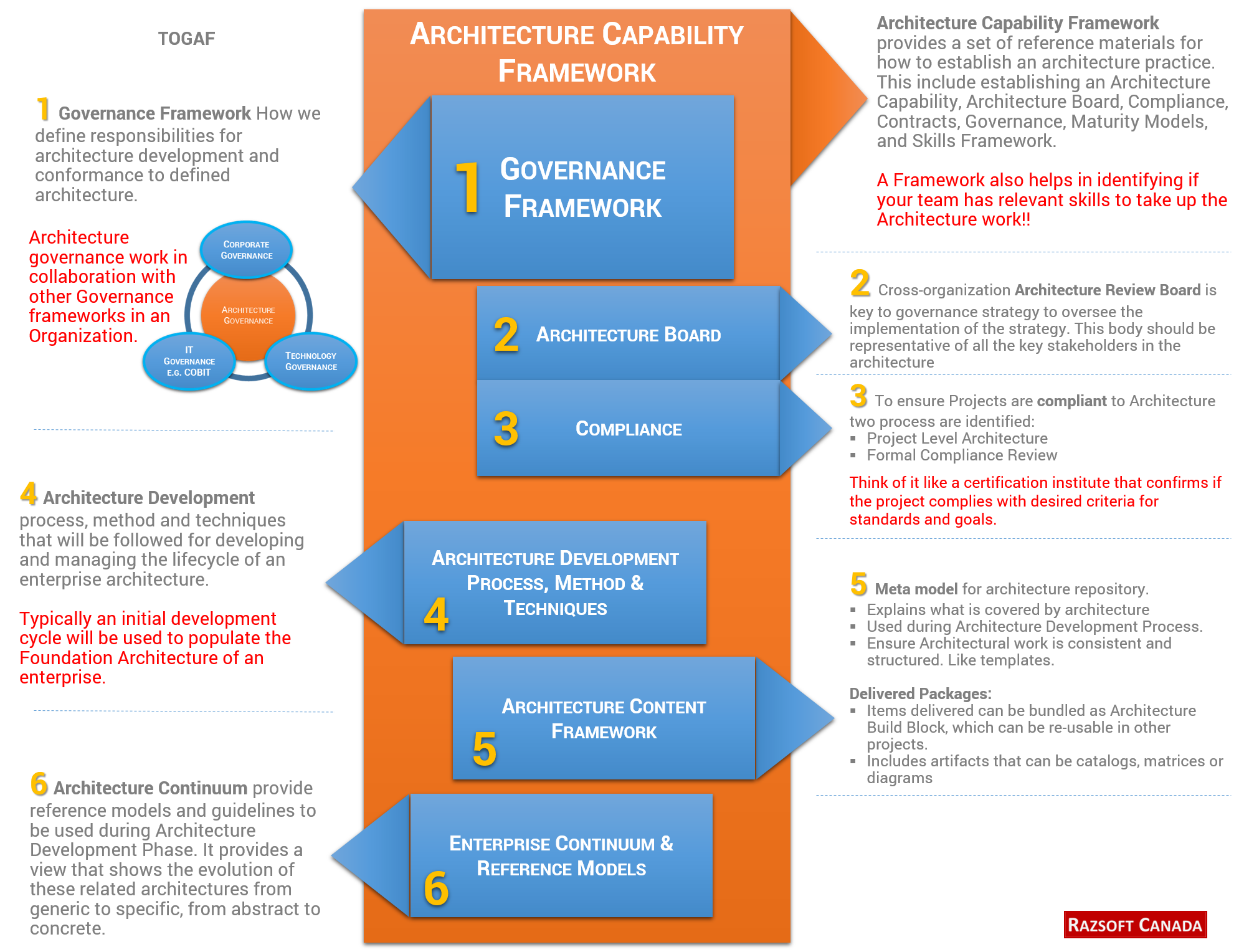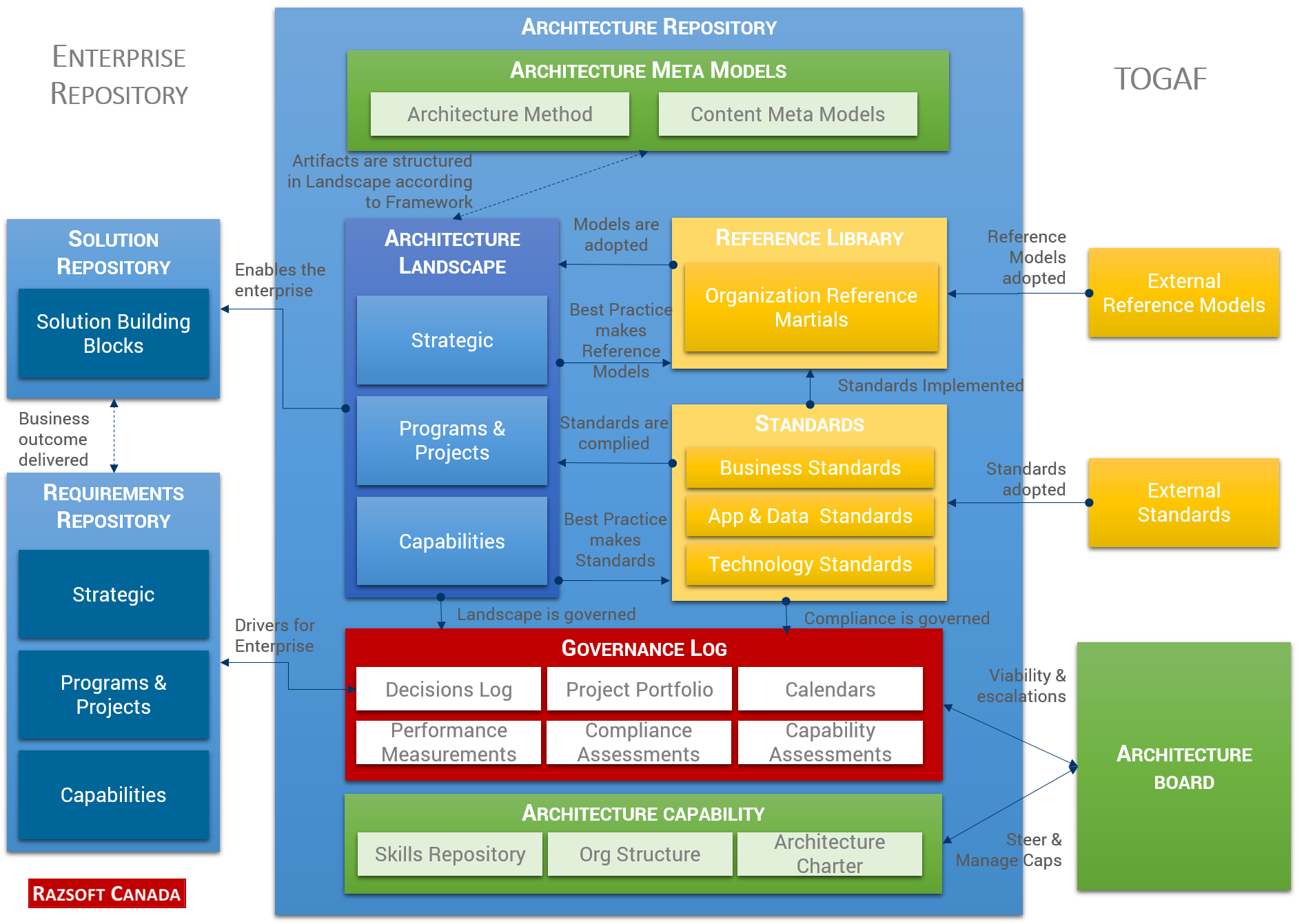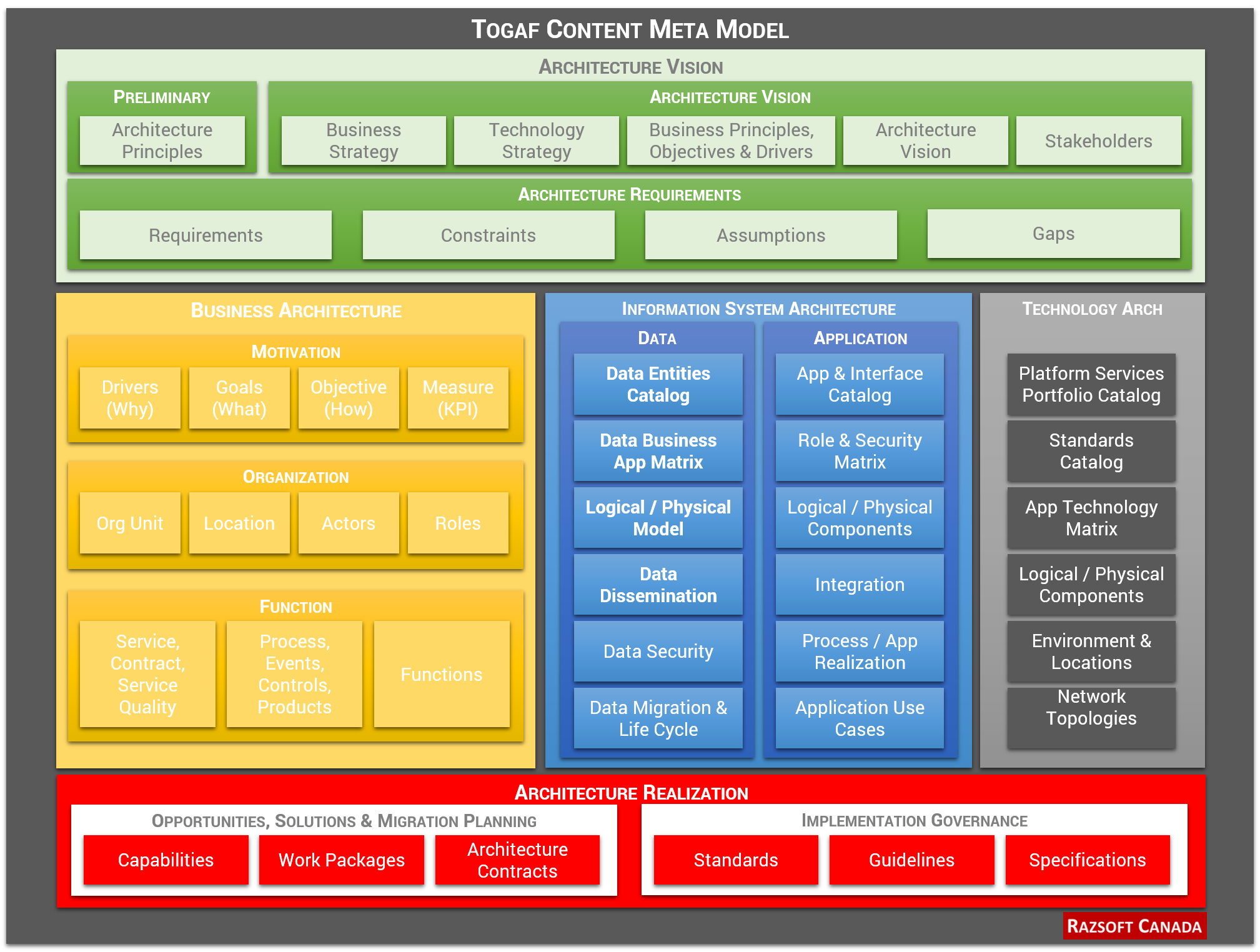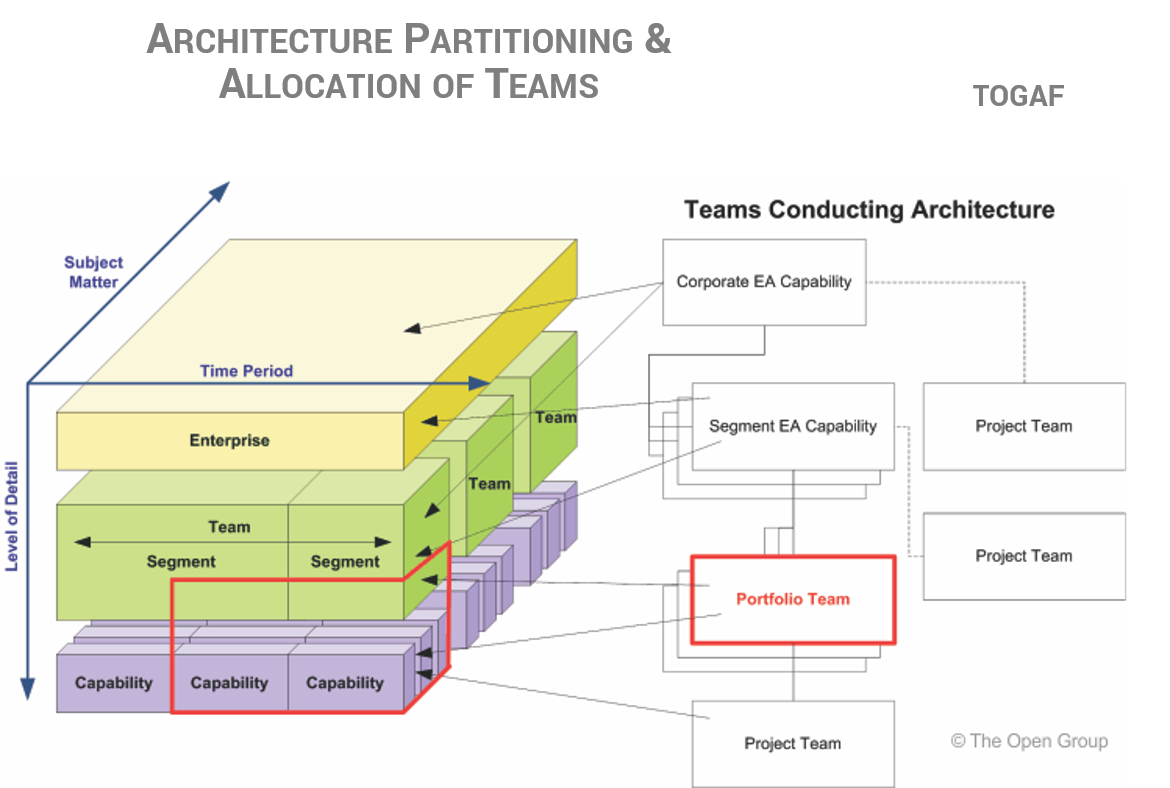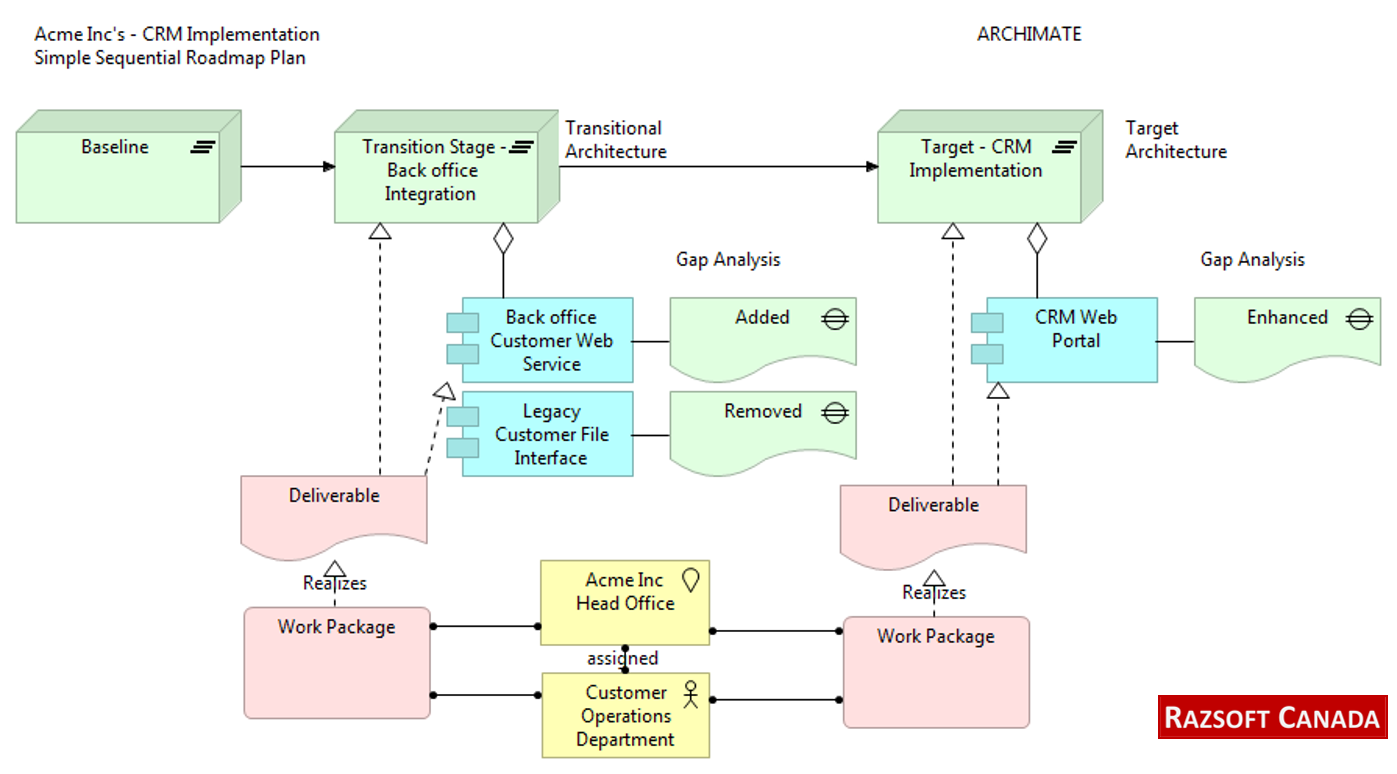Enterprise Architecture
Our consultants can help you to develop your Enterprise Architecture and establish a Governance Framework in your organization.
Key Activities
Establish an Enterprise Architecture Practice, define Org context, stakeholder motivations and key drivers, identify framework, define architecture scope and principles, capability maturity target, process and resources for governance. Identify governance and coordination with Business Capability Management, Portfolio, Operations and Solution Management. Establish architect team and implement architecture tools. Deliver Governance Framework and Architecture.
Identify EA Governance Framework
Identify methodology and select a Governance framework.
Build Architecture Repository`
Identify Capability Maturity, build Architecture Content Framework.
Develop Architecture
Establish Architecture Development Process. Define AS-IS and TO-BE.
Roadmap & Implement
Plan & Prioritize, Publish Transitional Roadmap, Deploy & Monitor.
Key Deliverables
First Stage
- Architecture Framework & Contract
- Architecture Repository
- Architecture Principles, Business Goals and Drivers
Second Stage
- Architecture Vision
- Communications Plan & Architecture SOW
- Architecture Requirements & Impact Assessment
- Governance Model & Change Request
- Migration Plan & Compliance Assessment
- Architecture & Solution Building Blocks
- Architecture Definition Document (Business, Systems, Technology)
Third Stage
- Architecture Roadmap & Implementation
FAQ
Enterprise Architecture when done properly is the critical instrument for enterprise efficiency in short-, mid- and long-terms. EA impacts the effect of the business operational processes, their cost and associated risks– the key factors for company efficiency even at tough times.
Enterprise Architecture provides a strategic tool for effective management for the evolution of the IT system in response to the constantly changing needs of the business environment. Furthermore, a good enterprise architecture enables you to achieve the right balance between IT efficiency and business innovation. It allows individual business units to innovate safely in their pursuit of competitive advantage.
- Efficient business operation, lower cost, and more agile organization.
- Efficient IT operation, lower development and support cost, improved interoperability and integration, and more portability.
- Better ROI & TCO, reduced risk and complexity, informed decisions on build vs buy or outsource.
- Faster & Cheaper Procurement, and procure heterogeneous, multi-vendor open systems
Architecture design is a technically complex process, and the design of heterogeneous, multi-vendor architectures is particularly complex. EA Framework plays an important role in helping to “demystify” the architecture development process, enabling organizations to build genuinely open systems-based solutions to their business needs.
Framework
To operate a successful architecture practice in an enterprise, it is necessary to put in place appropriate organization and governance structure that can identify processes, roles, responsibilities, and skills to realize the Architecture Capability.
Architecture Capability Framework provides a set of reference materials for how to establish an architecture practice. This include establishing an Architecture Capability, Architecture Board, Architecture Compliance, Architecture Contracts, Architecture Governance, Architecture Maturity Models, and Architecture Skills Framework.
A Framework also helps in identifying if your team has relevant skills to take up the Architecture work!!
Here are few examples of architectural frameworks.
Large organization creates huge volume of architectural outputs. Managing and organizing them requires effective management, tools, storage, and a formal taxonomy for various different artifacts.
Categorization of artifact is generally done from higher generic level to organization-specific project level, separating architectural building blocks from solution building blocks. For instance, in Togaf The Enterprise Continuum provides methods for classifying architecture and solution artifacts. As part of adopting a methodology, building and organizing these repositories is key exercise in EA engagement.
Here are few examples of metamodels and taxonomy of these repositories.
Architecture Repository
Key architecture repository that define Architecture Metamodel on how to Govern and organize Contents in an Architecture Engagement. Hold Capabilities and Requirements, Reference Models and Industry Standards, Architecture landscape, Solution Architecture, and Governance logs.
The Architecture Roadmap lists individual work packages that will realize the Target Stage Architecture, and lays them out on a timeline to show progression.
The Roadmap highlights business value at each Transitional Stages, that are identified as intermediate steps. The Architecture Roadmap is incrementally developed.
Architecture Partition
Partitioning of Architectural work to manage complexity for each individual architecture or solution.
